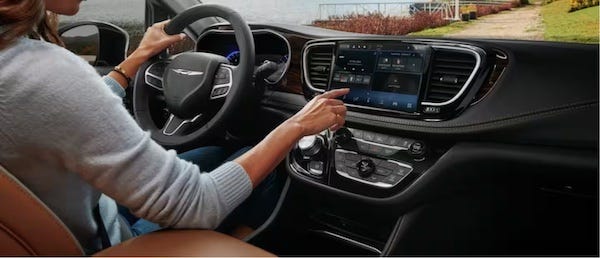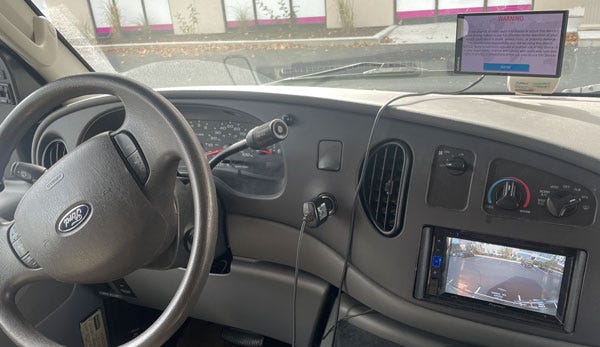Welcome to another edition of Willoughby Hills!
This newsletter explores topics like history, culture, work, urbanism, transportation, travel, agriculture, self-sufficiency, and more.
If you like what you’re reading, you can sign up for a free subscription to have this newsletter delivered to your inbox every Wednesday and Sunday and get my latest podcast episodes:
Hello friends and welcome to a special Sunday evening edition of Willoughby Hills. Normally, I like to have this newsletter scheduled to hit your inbox first thing in the morning on Sundays so that you can read each issue with some morning coffee and take your time with the thoughts.
Today’s issue is a little later than usual because my family and I spent the weekend in our RV, visiting Sesame Place outside Philadelphia for their Halloween festivities. I’m trying to be more present with my kids these days, recognizing that time with them is fleeting and they won’t be this age for long. We had a wonderful time as a family, and now that we’re home and they’re in bed, I’m able to sit down and share some thoughts with you.
I had simplicity on the mind this weekend and that’s the theme I want to discuss today. At my wife’s suggestion, I have been reading the book Simplicity Parenting: Using the Extraordinary Power of Less to Raise Calmer, Happier, and More Secure Kids by Kim John Payne (with Lisa M. Ross).
The book uses a parenting lens to describe something that I’ve been aware of from podcast conversations with folks like Sarah Susanka and Sandra Goldmark: that the less stuff that we have, the happier we are.
In Simplicity Parenting, Payne makes the argument for basic toys that can stimulate the imagination. A simple kitchen set, dollhouse, or dump truck can last for years and bring children into an imaginary world, where as plastic toys with “fixed” characteristics encourage only one kind of play. Action figures, Barbie dolls, or electronic toys that mimic computers or phones fit into these categories.
Payne also advocates for borrowing books from the local library a few at a time rather than crowding children’s rooms with stuffed bookshelves. And he suggests choosing well-made, simple clothing options that can last a long time, rather than displaying the currently trendy movie or TV characters.
As you might imagine, this book appeals to me in a lot of ways, and as I was driving the RV up and down I-95 this weekend, I began to notice something.
Our RV is a complex machine: it’s basically a cargo van with a giant house attached to it. There’s a refrigerator, a stove and oven, a shower, multiple beds, heating, air conditioning, and a generator.
Yet as complex as the RV is, nearly all of the control systems are invisible. In fact, when sitting in the driver’s seat, I only have access to a handful of knobs and buttons. There are three knobs that control the vehicle’s HVAC system, a control for the headlights, and that’s about it.
The RV is from 2006, which feels recent to me, but is approaching “vintage” with every passing year. It comes from an era before touchscreens and overly complex computerized systems. (I did change the radio to a touchscreen about two years ago, although it only controls music and displays a backup camera).
Contrast that with the rental car that I had last week in Dallas: a brand new Chrysler Pacifica minivan. The Pacifica’s dashboard was a mess of buttons that controlled everything from parking sensors to lane departure warning systems to the HVAC system and radio.
It also had a giant touchscreen which duplicated many of the functions of the physical buttons.

The Pacifica was also heavy on round knobs, which were used for the transmission selector, radio volume, and HVAC selection. There was one more knob that I’m not even sure what it did. At any rate, I imagine it could be possible to try to turn the radio volume up or down and end up shifting into the wrong gear because the radio knob and transmission knob look so similar and are adjacent.
I’m sure if I were a regular driver of the Pacifica, I would eventually learn all of the controls, but it took a few minutes of fumbling with the physical buttons and touch screen to get the air conditioning to a comfortable temperature in the rental car last week.
We have a tendency these days to think more is better, but I try to fight that urge whenever possible. Simplicity is my new goal.
Simplicity is less stuff, yes, but simplicity can also be fresh, organic bok choy, sautéed in olive oil and garlic. Simplicity is a well made shirt that can fit with any situation. Simplicity is a room devoid of clutter with simple, functional things.
I have not reached there yet in every aspect, but I strive for it with each new day.
The nice thing about simplicity is that it makes room for adaptation. When I’m driving the RV, in an emergency, I can easily reach any control and change any vehicle function in a split second. On a more complex car with a dashboard that resembles the cockpit of a jet, that’s much harder to do.
In a chaotic life, we fight to keep our own head above water and barely have time for anybody else. In a simple life, we can make room for other people and their problems. It’s easier to stay on top of events of the war in the Middle East and easier to show compassion to the suffering of Israelis and Palestinians when our own life is decluttered, organized, and simple. And it’s easier to tune out the latest paparazzi photo or celebrity gossip.
There was something very nice and reassuring about looking at the dashboard and only seeing three knobs this weekend, and it made me want to simplify the rest of my life even more.
Thanks for reading Willoughby Hills! Subscribe for free to receive new posts and support my work.
Related Reading
If you’ve missed past issues of this newsletter, they are available to read here.







